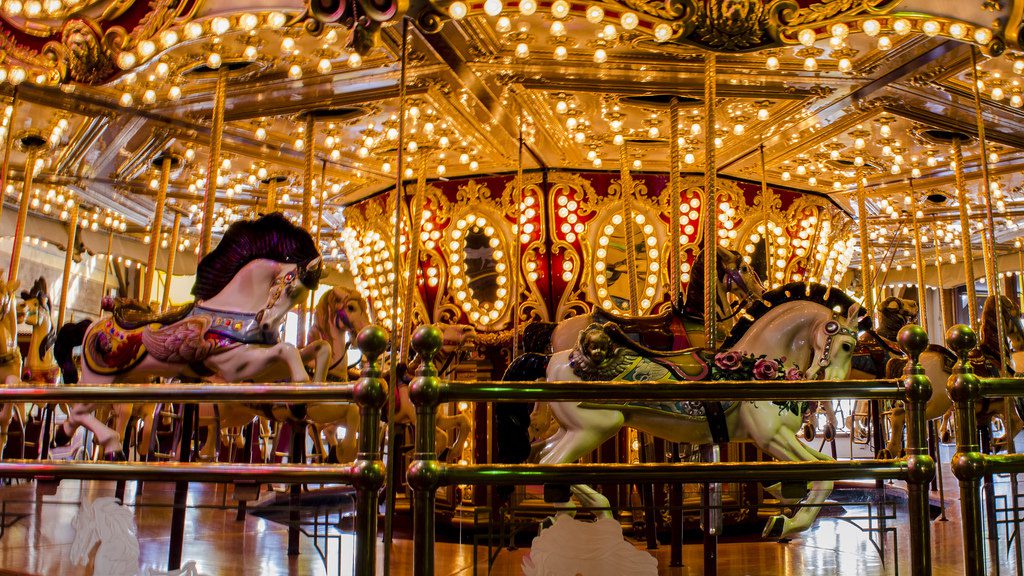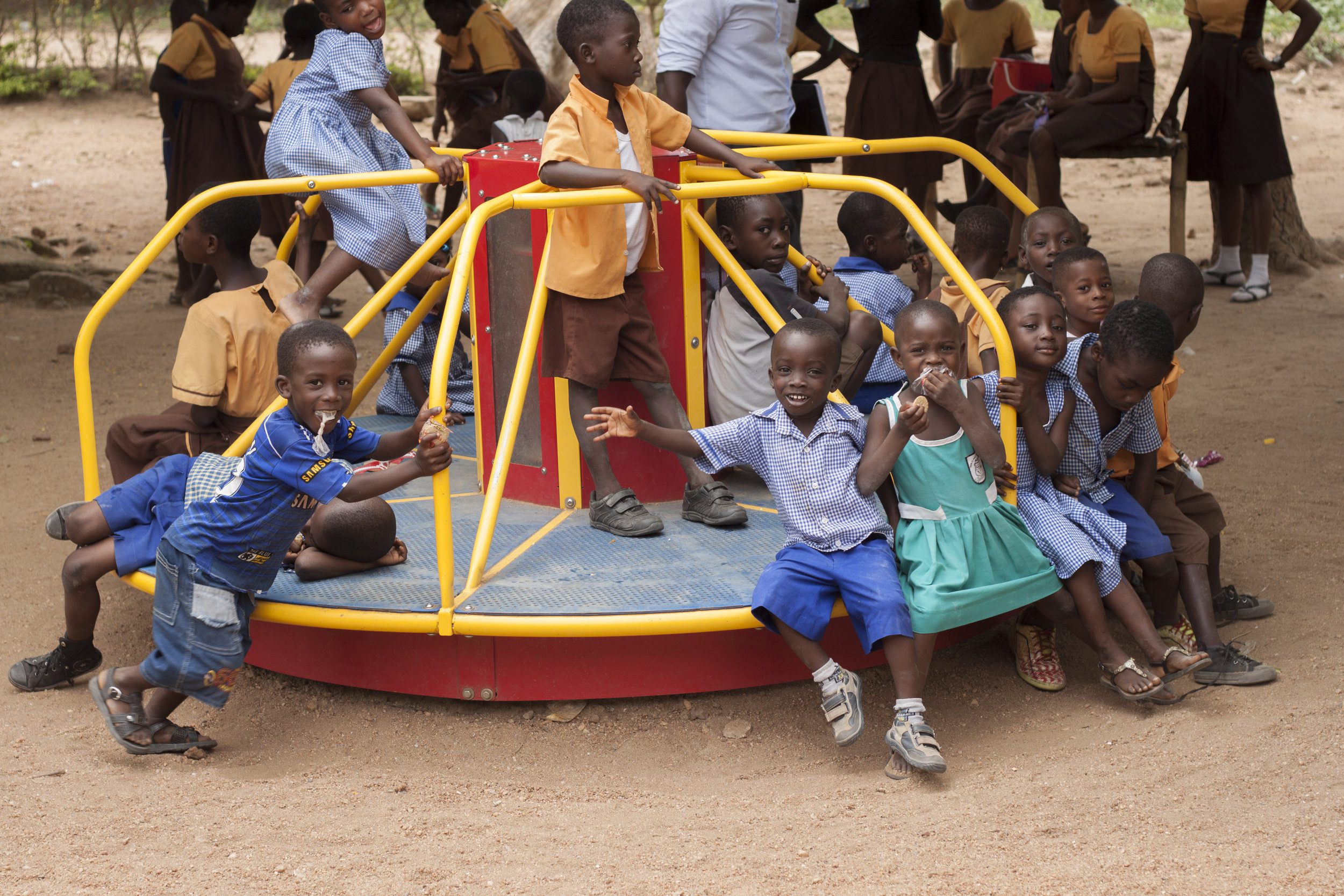Using merry-go-rounds as a means to generate electricity might seem like an odd “spin” on the traditional idea of a carousel, but we like to think of it as only the most recent development in the carousel’s rich history.
hough the idea of a circular, spinning ride has existed since the 6th century, the carousel as we know it first showed up in 12th century Europe and Asia. The word “carousel” comes from the Italian “carosello”, meaning “little war”, which was used to describe a game where horsemen would toss a clay ball between each other.
Some players would practice the game by using a rotating contraption with fake horses. By the eighteenth century, this “carousel” had outlived the sport that it supported and made its way into fairs, though it lacked the colorful animals that distinguish it today.

a 17th century, man-powered carousel
Fair carousels were at first powered by manpower, horses, or even bicycles, and it wasn’t until Thomas Bradshaw’s unique “roundabout” that the carousel would become self-propelled. Inventor Frederick Savage also created a mechanism that would allow each animal to move up and down, imitating a horse’s galloping gait. Merry-go-rounds became an art form, and riders now could choose from many exotic hand-carved creatures, such as tigers, unicorns, and sea dragons.
By the Great Depression, the carousel would see the end of its golden age. Few could afford to spend money on such a frivolous pleasure, and even after the Depression ended, many had lost interest in this “children’s ride” compared to more exciting ride innovations.
But the carousel managed to stay around, and as ride technology advanced, newer, less expensive ones could be made bigger than ever before. Despite the simple ride mechanic, fair-goers of all ages recognized the timeless excitement of the carousel. It remains an amusement staple, not just in fairs, but in boardwalks, malls, and even children’s parks.

Seattle’s waterfront Carousel, taken by Sworldguy on Flickr
The carousel that Empower Playgrounds takes inspiration from is more simple than the ones that you will find at a fair. We were inspired by the merry-go-rounds that we rode as kids at our local parks, pushing our friends, siblings and strangers around. We would all take turns spinning the merry-go-round, and we all benefited from each other’s hard work. It was different from the swing sets and slides, where you weren’t forced to share or to work together. But we’d keep coming back to it, because just as those onlookers in ancient history realized, it was simple, good fun.
There’s a reason that the merry-go-round has stuck around for so long. Though Empower Playground’s primary goal is to enhance students’ educational opportunities, we also hope that students will simply have fun playing on their merry-go-rounds. Fun and education don’t need to exist separately, and as founder Ben Markham puts it, “play is often real hands-on learning of both physical science and social science.” So on this National Merry-Go-Round day, give some thought to all of the memories that you’ve made on merry-go-rounds!

